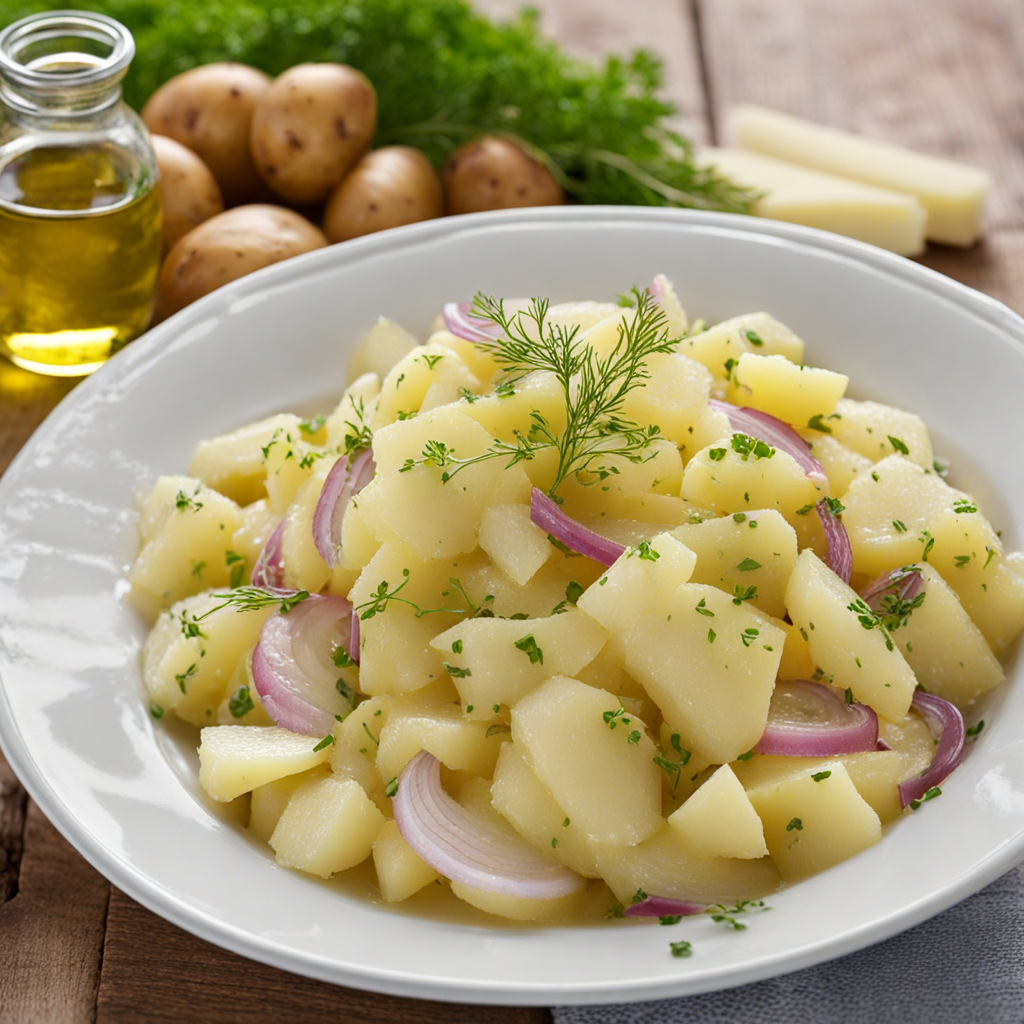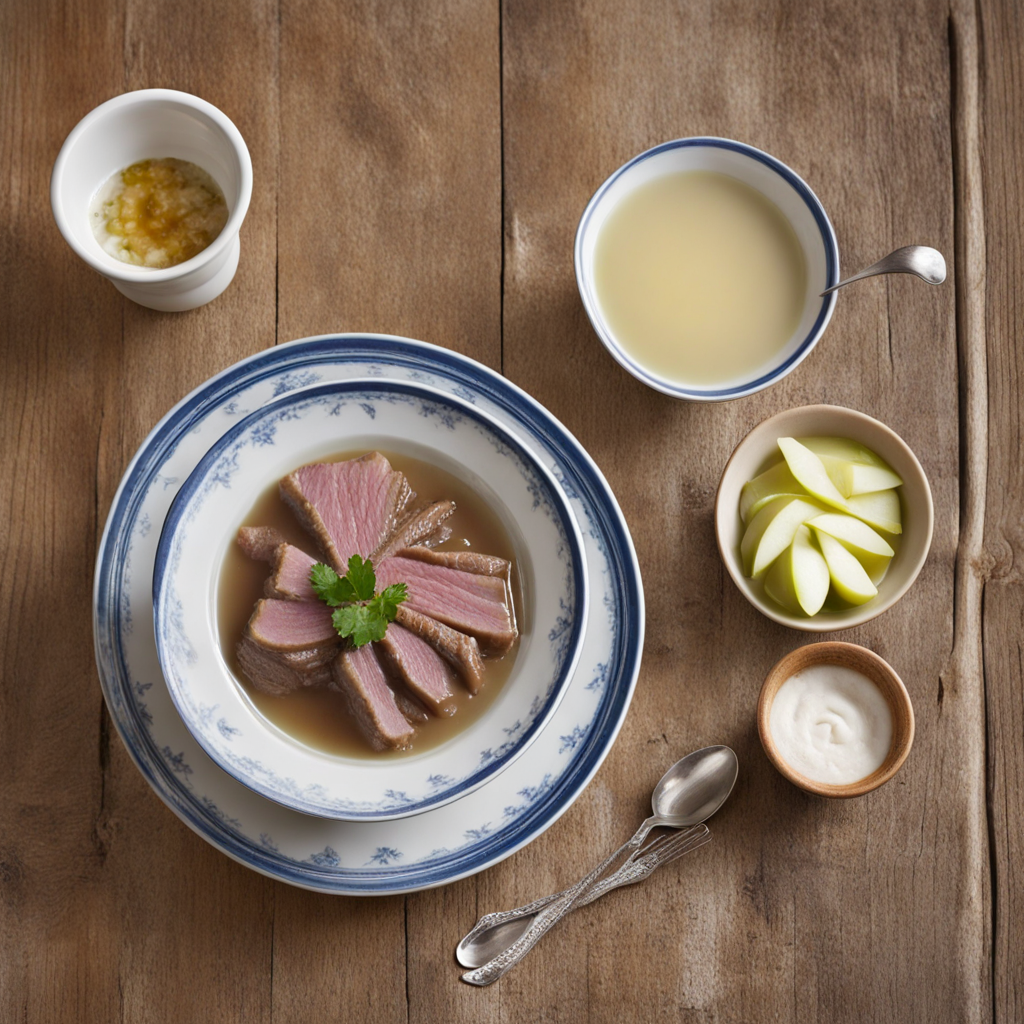Spinatknödel
Spinatknödel, a delightful dish hailing from Austria, is a type of dumpling that showcases the vibrant flavors of spinach, making it a perfect choice for those looking to explore vegetarian cuisine. These green dumplings are primarily made from fresh spinach, bread, and eggs, creating a harmonious blend of textures and tastes. The spinach imparts a subtle earthiness, while the bread adds a comforting, chewy consistency, resulting in a dish that is both satisfying and nourishing. Traditionally, Spinatknödel are seasoned with aromatic herbs and spices, such as nutmeg and garlic, which elevate their flavor profile and add a layer of complexity. They are often served with a rich, creamy sauce or alongside a hearty mushroom gravy, allowing the dumplings to absorb the savory elements of the sauce. This combination not only enhances the taste but also creates a beautifully presented dish that is both visually appealing and delectable. For those adventurous enough to try their hand at making Spinatknödel, the process is quite straightforward. The spinach is blanched and mixed with the other ingredients, then shaped into balls and boiled until they float, signaling that they are ready to be enjoyed. Whether served as a main course or a side dish, Spinatknödel offers a unique culinary experience that captures the essence of Austrian comfort food, making it a must-try for anyone seeking new flavors.
How It Became This Dish
The History of Spinatknödel: Austria’s Delightful Spinach Dumplings Origins: A Culinary Confluence of Ingredients Spinatknödel, or spinach dumplings, are a beloved dish in Austrian cuisine, known for their comforting texture and hearty flavor. The origins of Spinatknödel can be traced back to the broader tradition of dumpling-making in Central European cultures, where hearty ingredients and simple preparation methods were essential for sustenance. Dumplings, or "Knödel," in German-speaking lands, have been a staple since at least the Middle Ages, often made from bread, potatoes, or flour. These versatile morsels were developed to utilize leftover bread and other ingredients, reflecting the resourcefulness of past societies. Spinach itself has a long history in Europe, having been introduced from Persia via Spain in the 9th century. As it gained popularity, particularly during the Renaissance, spinach became a favored green in many countries, including Austria. The combination of spinach and bread in dumplings likely emerged as a practical way to incorporate this nutritious vegetable into a filling meal. Thus, Spinatknödel represents a nexus of cultural influences, merging the Austrian tradition of dumpling-making with the healthful benefits of spinach. Cultural Significance: A Culinary Tradition In Austria, Spinatknödel can be found in homes, restaurants, and at festive occasions. They are typically served as a side dish or a vegetarian main course, embodying the spirit of Austrian cooking—hearty, wholesome, and satisfying. The dish is often accompanied by rich sauces, such as brown butter or creamy mushroom sauce, which enhance its flavors and elevate its status from simple fare to a culinary delight. The cultural significance of Spinatknödel is deeply intertwined with the Austrian ethos of seasonal and regional cooking. As an ingredient, spinach is often harvested in the spring, aligning with the practices of using fresh, local produce. Traditional Austrian cuisine emphasizes the connection between food and the land, and the preparation of Spinatknödel is no exception. Families often gather to make these dumplings, passing down recipes and techniques through generations, reinforcing community bonds and culinary heritage. Development Over Time: Variations and Modern Interpretations The evolution of Spinatknödel over the centuries mirrors broader culinary trends in Austria. Initially, the dumplings were primarily made with stale bread, a staple in many households. As culinary practices evolved, so did the ingredients. The introduction of various cheeses, such as ricotta or quark, into the dough increased the richness and flavor profile of the dumplings, making them even more appealing. In the 20th century, as global influences permeated Austrian cuisine, Spinatknödel began to adapt to contemporary tastes. Chefs started experimenting with various fillings and toppings, introducing flavors like garlic, nutmeg, and even exotic spices, thus broadening the dumpling’s versatility. While traditional recipes remain prevalent, modern interpretations often reflect a fusion of culinary traditions, as chefs aim to cater to a more diverse palate. One of the most notable adaptations has been the incorporation of different types of greens alongside spinach, such as Swiss chard or kale, which add new dimensions to the dish while maintaining its original spirit. Furthermore, with the rise of vegetarianism and veganism, Spinatknödel has become a symbol of plant-based cooking, appealing to those seeking healthier options. Regional Variations: From Tradition to Innovation While Spinatknödel is widely recognized across Austria, different regions have developed their unique takes on the dish. In Tyrol, for instance, dumplings may be enriched with speck (cured ham) or served in a hearty broth, showcasing the region’s love for robust flavors. In contrast, the Viennese version may lean towards a lighter preparation, often served with a delicate herb sauce or accompanied by seasonal vegetables. These regional variations not only highlight the diversity of Austrian cuisine but also reflect the local agricultural bounty. In areas where spinach is plentiful, such as the fertile Danube Valley, it is celebrated as a primary ingredient, while in mountainous regions, heartier flavors and ingredients may take precedence. This adaptability speaks to the broader culinary principle in Austria of making the most of what the local environment offers. Modern-Day Appreciation: A Culinary Icon Today, Spinatknödel enjoys renewed popularity, both in traditional settings and contemporary urban eateries. They are frequently featured on menus not only as a nod to Austrian heritage but also as a symbol of comfort food that transcends cultural boundaries. The rise of food tourism has also played a significant role in the dish’s proliferation, as visitors to Austria seek authentic culinary experiences. Food festivals celebrating Austrian cuisine often showcase Spinatknödel, where chefs engage in friendly competitions to create the best dumplings, further solidifying its status as an iconic dish. In homes, families continue to gather around the kitchen table, crafting these dumplings together, ensuring that the tradition remains alive for future generations. Conclusion: A Dish Beyond Borders Spinatknödel serves as a testament to the rich tapestry of Austrian culinary history, encapsulating the evolution of ingredients and techniques while maintaining its roots in tradition. As a dish that bridges the past with the present, it embodies the essence of Austrian culture—resourceful, communal, and deeply connected to the land. Whether enjoyed in a rustic inn in the Alps or in a modern café in Vienna, Spinatknödel is more than just a meal; it is a symbol of heritage, family, and the enduring love for good food. As we look to the future, it is clear that the humble spinach dumpling will continue to evolve, inviting new generations to savor its flavors and share in its rich history.
You may like
Discover local flavors from Austria







